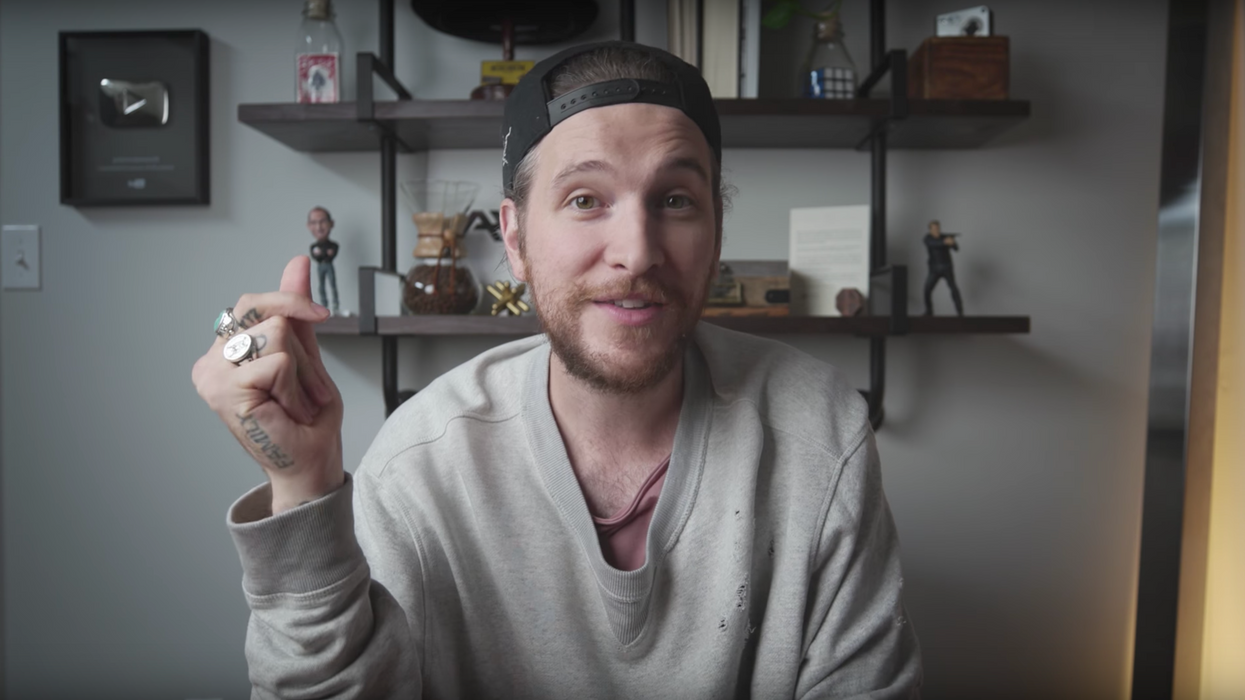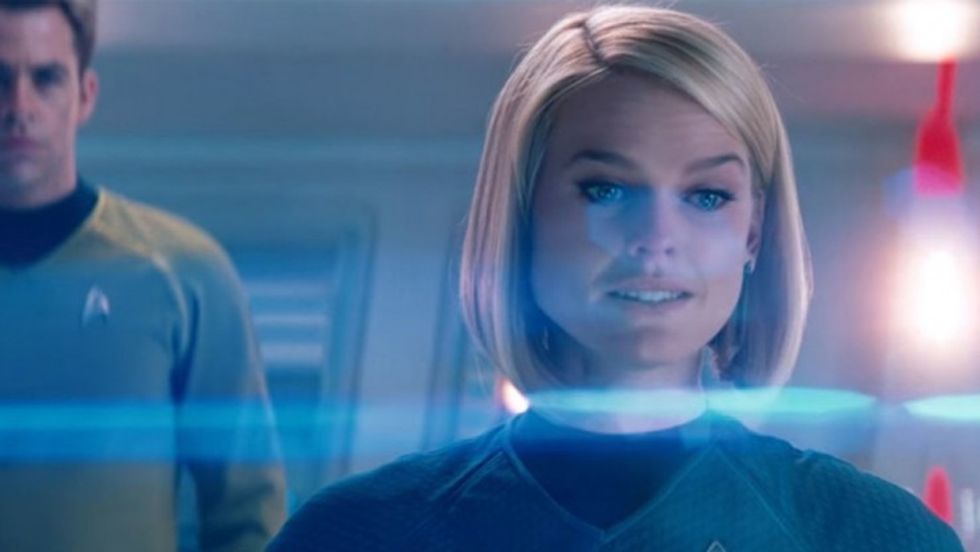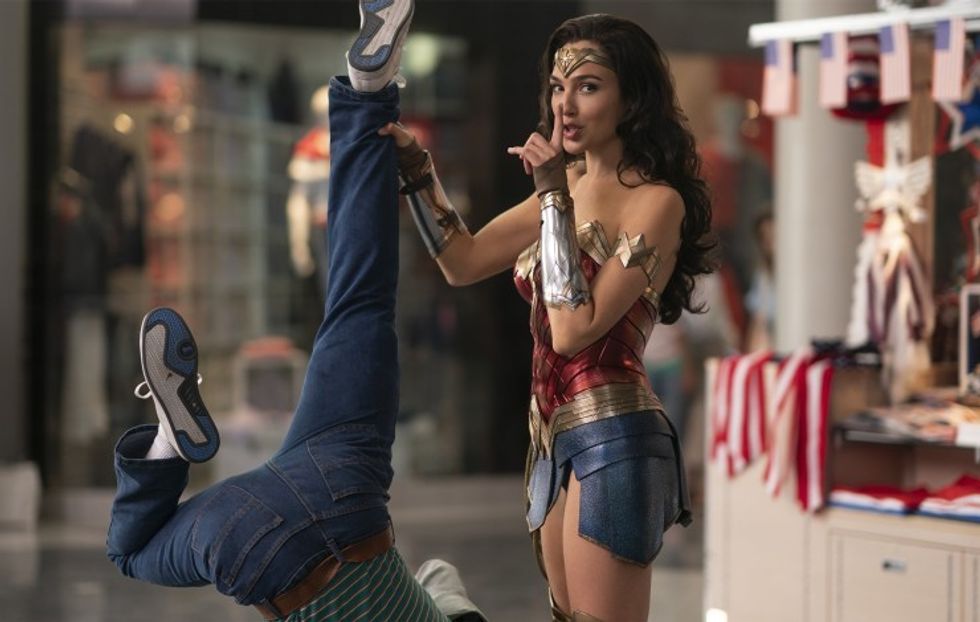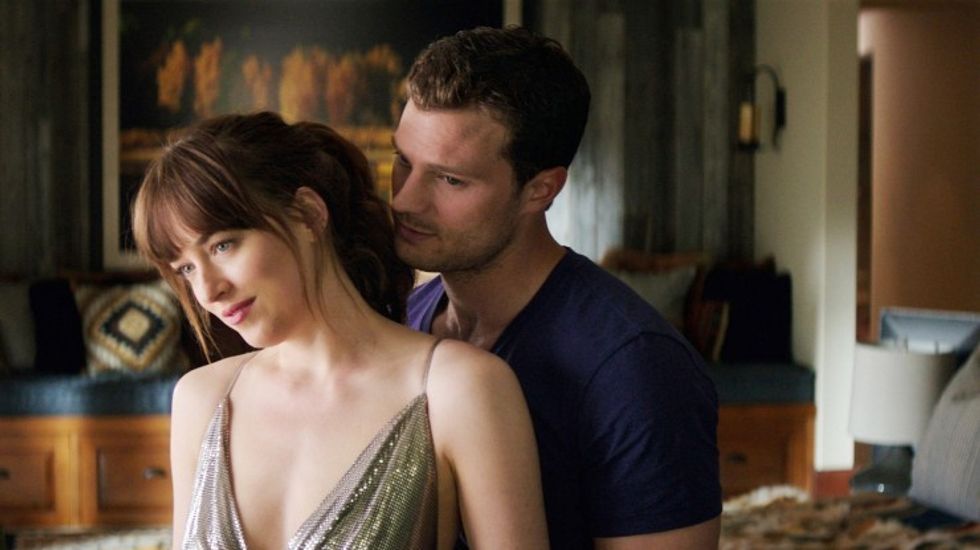So, if you're in the mood for a Mary Sue analysis, you're in the right place.
Let's get started.
What Is a "Mary Sue"?
A few years ago, there was this big online conversation about Rey from Star Wars: The Force Awakens being a Mary Sue (led by a moron).
It was the first time I had heard the word. And I genuinely had hoped it went away after because I feel like when people use it, they don't approach it with nuance and the writer's intent. But that's what we are going to try to do today.
 'Star Wars: The Force Awakens'Credit: Disney
'Star Wars: The Force Awakens'Credit: Disney
Mary Sue Character Type Definition
A Mary Sue is a type of fictional character, usually a young woman, who is portrayed as free of weaknesses without the support of training or inherent skills. A Mary Sue usually never fails at what she attempts. It can also be an author-insert character used for wish fulfillment (meaning it's a non-canon character).
The male version of a Mary Sue is often called a Gary Stu, Gary Sue, or a Marty Stu.
Mary Sue Character Type Origins
Where does Mary Sue come from? Well, this character archetype has its root in a fun, non-canon story from Star Trek. It's the name of a character created by Paula Smith in 1973 in the fanfiction story "A Trekkie's Tale." It was a parody that actually got published in Smith's and Sharon Ferraro's Star Trek magazine, Menagerie. The story featured Lieutenant Mary Sue, who was the youngest lieutenant in the fleet at only 15 and a half years old. It was told as a satire of female characters widespread in Star Trek fan fiction.
You can read the full short story below.
"Gee, golly, gosh, gloriosky," thought Mary Sue as she stepped on the bridge of the Enterprise. "Here I am, the youngest lieutenant in the fleet—only fifteen and a half years old." Captain Kirk came up to her. "Oh, Lieutenant, I love you madly. Will you come to bed with me?"
"Captain! I am not that kind of girl!"
"You're right, and I respect you for it. Here, take over the ship for a minute while I go get some coffee for us."
Mr. Spock came onto the bridge. "What are you doing in the command seat, Lieutenant?"
"The Captain told me to."
"Flawlessly logical. I admire your mind."
Captain Kirk, Mr. Spock, Dr. McCoy and Mr. Scott beamed down with Lt. Mary Sue to Rigel XXXVII. They were attacked by green androids and thrown into prison. In a moment of weakness Lt. Mary Sue revealed to Mr. Spock that she too was half Vulcan. Recovering quickly, she sprung the lock with her hairpin and they all got away back to the ship.
But back on board, Dr. McCoy and Lt. Mary Sue found out that the men who had beamed down were seriously stricken by the jumping cold robbies, Mary Sue less so. While the four officers languished in Sick Bay, Lt. Mary Sue ran the ship, and ran it so well she received the Nobel Peace Prize, the Vulcan Order of Gallantry and the Tralfamadorian Order of Good Guyhood.
However the disease finally got to her and she fell fatally ill. In the Sick Bay as she breathed her last, she was surrounded by Captain Kirk, Mr. Spock, Dr. McCoy, and Mr. Scott, all weeping unashamedly at the loss of her beautiful youth and youthful beauty, intelligence, capability and all around niceness. Even to this day her birthday is a national holiday on the Enterprise.
 'Star Trek: Into Darkness'Credit: Paramount Pictures
'Star Trek: Into Darkness'Credit: Paramount Pictures
Mary Sue Analysis
The reason people get upset by these characters is that they feel underwritten and lazy. If a character is just inherently good at everything, how will we see them grow or arc as a person?
Many people have debated whether or not the idea of a Mary Sue is actually based in a sexist notion or standard not held to male characters. After all, people like James Bond seem to know how to do everything, and we just kind of say it's because he's a "spy."
Salon wrote in 2015, “The term Mary Sue is rooted in a long history of dismissing female characters and holding them to absurd double standards.”
Still, there's an argument to be made for actually creating a character with depth and intention. Writers work hard to craft certain people in screenplays. They should work to craft everyone. Give them a story and some reasoning behind what they can do.
 'No Time to Die'Credit: MGM
'No Time to Die'Credit: MGM
Are There Exceptions to the Mary Sue Character Type Rule?
While many people argue that Mary Sues are not a thing in film and TV, I think the answer lies more in the idea that in some escapist genres, the audience is more likely to believe in a character able to do fantastic things.
Like in superhero tales, we're going to believe someone with powers can fight and save the day. Or in romances, we tend to buy into anything that keeps the love story going. Finally, in fairy tales, we're much more willing to suspend disbelief when Fiona can do kung-fu or Legolas can shoot every orc with an arrow.
 'Wonder Woman 1984'Credit: Warner Bros.
'Wonder Woman 1984'Credit: Warner Bros.
Mary Sue Character Type Examples in Film and TV
The Mary Sue trope is prevalent across all mediums of storytelling. While it usually applies to female characters, we should talk about Gary Stu/Marty Stu here as well, since I think all the same rules apply, and separating because of sex is kind of dumb. An underwritten fictional character is bad no matter who plays them in a movie.
First up, I want to talk about the character Anastasia from 50 Shades of Grey. She was written as a character in a Twilight fan fiction, which was then expanded into the popular book and movie.
So she fits one mode of the definition as an author-inserted fantasy. And when you look at Bella from Twilight she seems to fit the other mode. She's good at everything without real weakness. Everyone loves her and wants to protect her. She has harmless quirks like being clumsy. And her boyfriend Edward is a Gary Stu, great at everything based solely on being alive for a long time. I refuse to believe all vampires would be that good at baseball.
I am a big fan of characters who earn their wins, instead of inherently coming with them. But that's not always the case in film and TV. Many people think that Mary Sue aligns with the "chosen one" character trope. So we think of people like Harry Potter, who is born with talents and powers he didn't earn.
Think about someone like Tris in the Divergent books and movies. She was just born with many talents and leads a rebellion. She has to learn some skills, but the question of what's earned is a valid one.
There will always be debates over who is a Mary Sue and who is not. The goal is to imbue your characters with enough detail and story that the audience follows them on their journey and cares about them as they progress through their arc.
 '50 Shades Freed'Credit: Universal Pictures
'50 Shades Freed'Credit: Universal Pictures
Summing Up "What Is a 'Mary Sue' Character Type?" (Definition and Examples)
Now that you know all about the Mary Sue trope, it's time to go write the best fictional characters in general. Whether that's Star Trek fanfiction or in the Harry Potter universe, the term "Mary Sue" has become a bit of a controversial one.
While knowing what it means matters, what matters more is making sure your characters are not poorly written. Whether it's a male character or a female character, put the effort in and make the audience respond.
Now go get writing.


 'Star Wars: The Force Awakens'Credit: Disney
'Star Wars: The Force Awakens'Credit: Disney 'Star Trek: Into Darkness'Credit: Paramount Pictures
'Star Trek: Into Darkness'Credit: Paramount Pictures 'No Time to Die'Credit: MGM
'No Time to Die'Credit: MGM 'Wonder Woman 1984'Credit: Warner Bros.
'Wonder Woman 1984'Credit: Warner Bros. '50 Shades Freed'Credit: Universal Pictures
'50 Shades Freed'Credit: Universal Pictures









